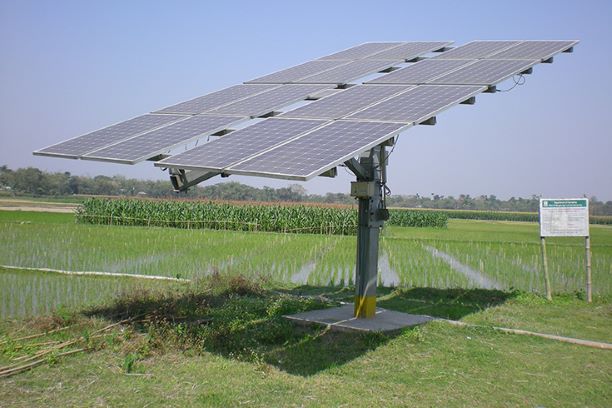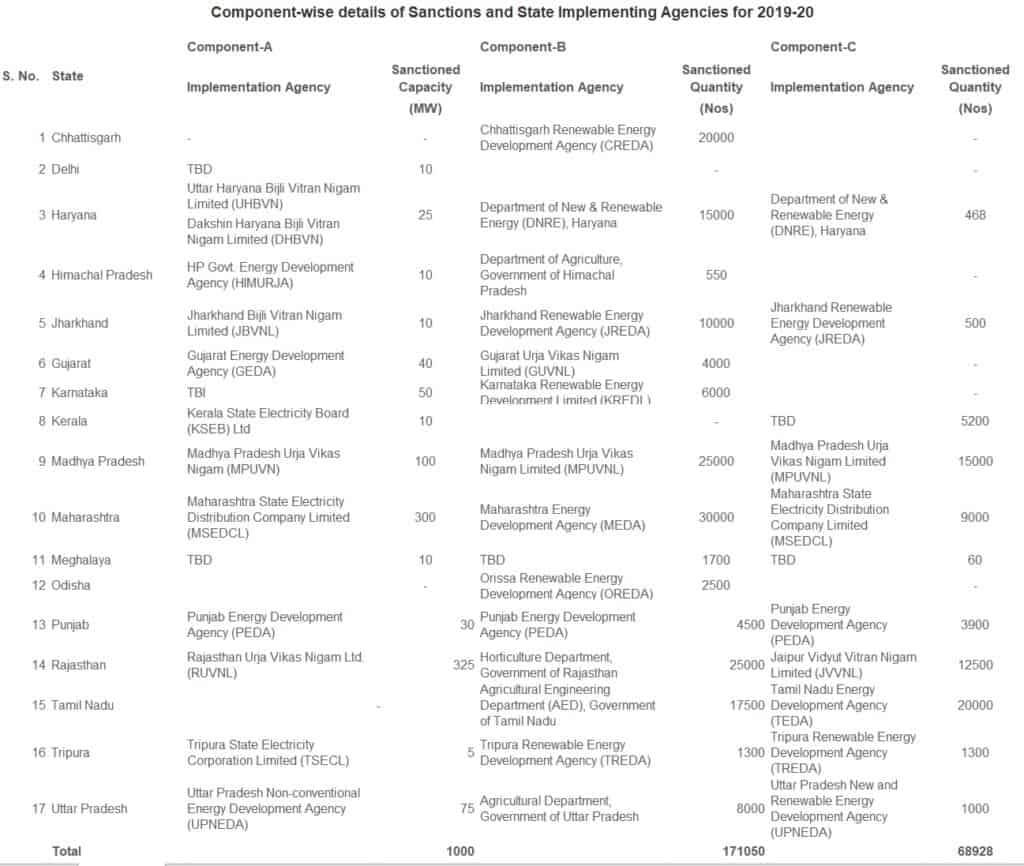Pradhan Mantri Kisan Urja Surakshaevam Utthan Mahabhiyan (PM-KUSUM) scheme for sustainable development of agriculture in India. Note that PM-KUSUM is prominently led by the Ministry of New and Renewable Energy (MNRE). This scheme provides a reliable, renewable and sustainable source of irrigation to farmers using solar agriculture pumps. The scheme has three components which include:
- Decentralized Grid Connected Renewable Energy Power Plants
- Stand-alone Solar Agriculture Pumps
- Grid Connected Agriculture Pumps
India Choosing to Support Climate Action
Recently, India took an oath to generate 40% of power using non-fossil fuels by 2030. Also, plans to reduce carbon emission by 33-35% by the same year as a part of Nationally Determined Contributions. Moreover, PM Modi highlighted that the nation would increase its renewable energy goal and install 175 GW of renewable before 2022. However, the abrupt drop in renewable energy to 5.7% raised doubts about attaining the said target. Nonetheless, the budget allotment seems to stimulate growth and restore the way to attain the set goal.
Budget Favoring the PM-Kusum Scheme
As per the recent news, a rise in the contribution of renewable energy sources from 21% to 24% is noted. Supporting that, the budget of MNRE has shot up from the previous Rs 5,000 crores. Besides that, Finance Minister Nirmala Sitharaman allotted Rs 22,000 crore for this sector on 1st February 2020. Despite that, the government also allotted over 2.83 lakhs to aid farmers via the PM-KUSUM scheme. Thus, approximately 20 lakh cultivators will set up solar pumps. Moreover, as marking a success, by December 2019 86 GW renewable energy (34GW solar and 34GW wind) is set up. Similarly, 9% of electricity was by this means in the initial 2 quarters of 2019-20.
The Objectives PM-KUSUM Scheme Strives to Attain
The PM-KUSUM scheme facilitates the installation of solar pumps along with a variety of replenish-able power plants across the country. Moreover, by 2020 strives to enable the addition of solar and other renewable capacities of 25,750 MW. Subsequently, Rs 34,222 crore is allocated as financial aid for this purpose. Furthermore, the scheme promises to cover the service cost of installing as well as implementing agencies.

Chief Components of the Scheme
The PM-KUSUM mainly focuses on three components. They include:
Component A– Decentralized Grid Connected Renewable Energy Power Plants on Barren Land
Decentralized ground equestrian Grid linked Replenishable power plants. That was about 10,000 MW and each unit will be over 2 MW in size. Furthermore, this will require the following:
- Choosing and Implementing the Power Plants– This includes notifying generation abilities of each substation, Expression of Interest (EoI) for RPG, select apt Renewable Power generator (RPG), create connection among substations, commissioning, Power Purchase Agreement (PPA), attain clearance from authority, Bank guarantee, Commercial Operation Date (COD), and release of PBI to Discoms
- The Stakeholders– MNRE, DISCOMs, SNAs, and RPG
Component B– Stand-Alone Solar Agriculture Pumps
Installing over 17.50 lakh Solar-powered agronomic pumps. Also, each pump must have a capacity of 7.5 HP. The roles under this component are
- Pump allocation and Procurement
- Setting a timeline and penalties
- Release of Funds
- Monitoring
- Maintenance
Note, the implementing agency will monitor all the necessities and ensure completion of the project within time.
Component C– Grid Connected Agriculture Pumps
Solarization of the laid down agriculture pumps. Similarly, it follows the same roles as Component C.
Highlight that, all the components must provide quality Assurance and mechanism evaluation protocol to check its aptness. Furthermore, it is important to follow the guidelines set by MNER.
Implementation of PM-KUSUM Scheme
MNRE monitors the functionality of the Scheme while concocting linkage among the State Nodal Agencies (SNAs), States or UTs, Discoms, and most importantly farmers. Further, the initiation of Components A and C in the pilot phase was till 31st December 2019. However, component B will skip the pilot phase entirely. Accordingly, component A will commission 1000MW of a ground-mounted project and Component c will solarise 1,00,000 lattices linked agricultural pumps. Following, successful test run, the scale-up will be implemented.

Protocol to register under the PM KUSUM scheme
- Visit the official website (the website is under maintenance and after official launch we will update the same).
- Obtain the application form available in the home page.
- Fill all the basic information of the applicant.
- Submit the duly filled form to complete registration.
- Following that, log in and fill the application to avail the benefits of PM KUSUM scheme.
- Note that the applicant should be a farmer, have a bank account and adhaar card for applying.
Benefits Under the Scheme
Some of the significant advantages concurred by the scheme are as follows:
- Benefits the owners of dry barren lands by generating a source of stable income for over a period of 25 years.
- Nevertheless, in the case of cultivators, they gain extra income as the solar panels are set above minimum crop height.
- Additionally, helps the Discoms attain their RPO target.
- Furthermore, provides enough energy for the rural centers as well as pump set loads (mostly required in the day time).
- Further, helps STUs and Discoms to decrease their transmission loss
- Reduces expenditure as it replaces the diesel pump that consumes diesel. Also, decreases the pollution by preventing the combustion of diesel.
- Moreover, it is estimated that the scheme shall benefit 17.5 farmers in 4 years.